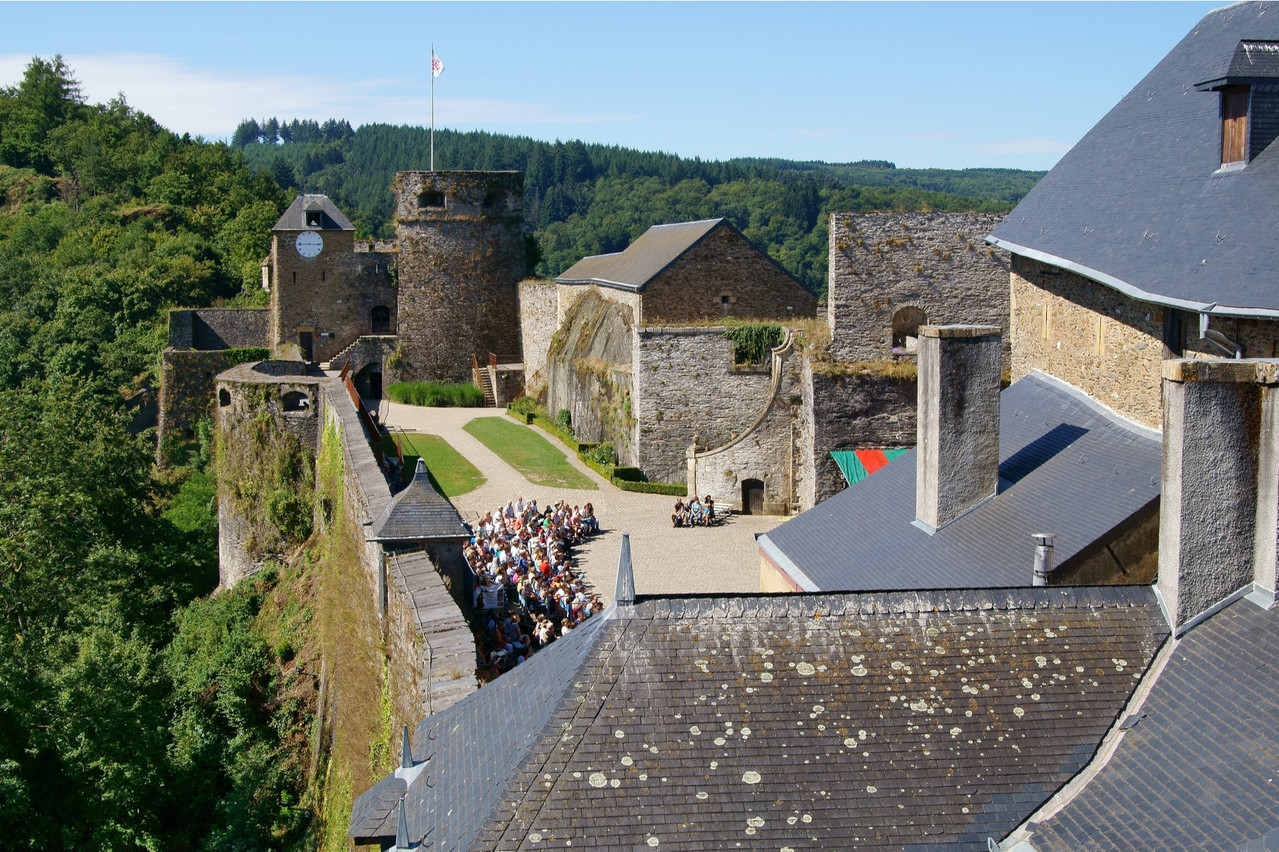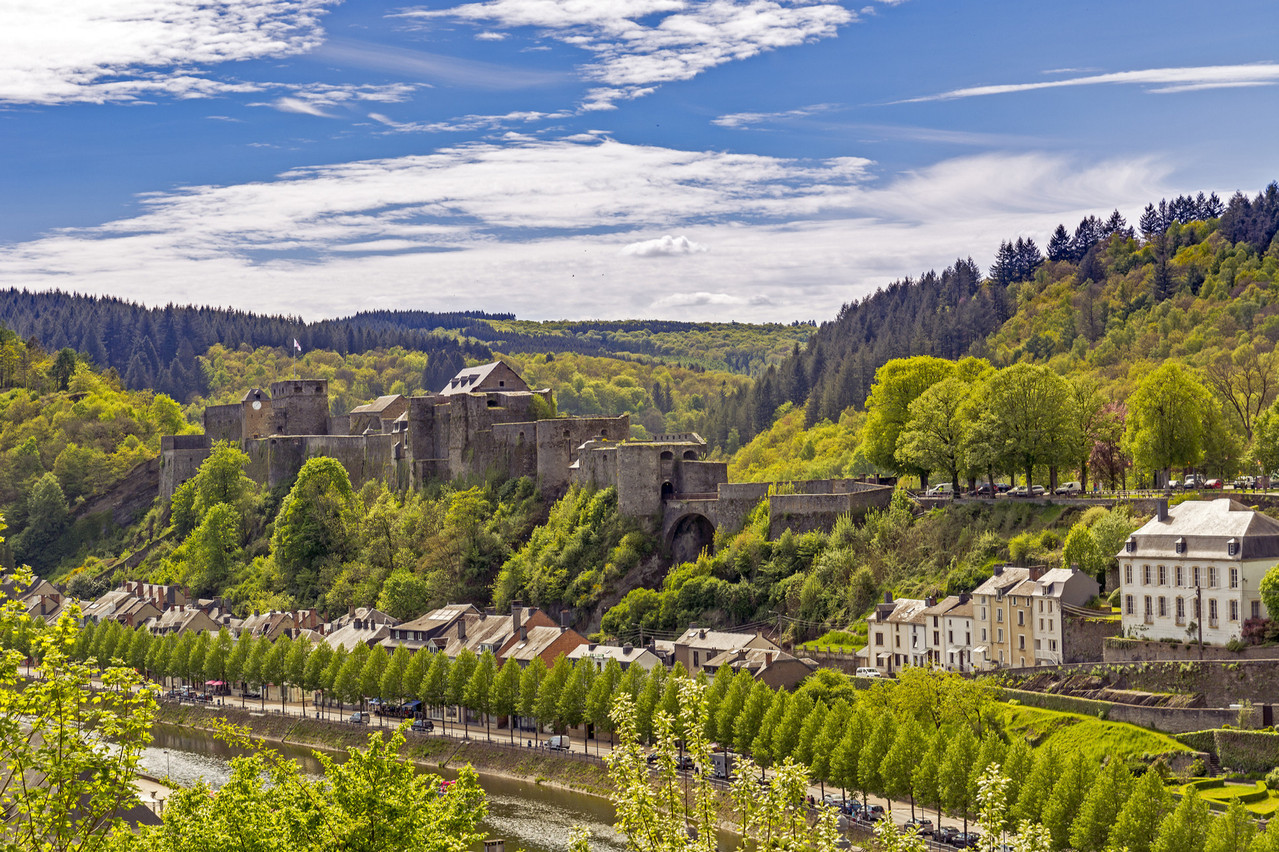Located 90km from Luxembourg City, and just across the border from France, Bouillon Castle has long been one of the jewels of Belgium's medieval heritage. Its location, on three rocky spurs at the entrance to a loop of the Semois river, has earned it the reputation of being the most beautiful in Belgium. The castle’s dimensions, over 300 metres long and 40 metres wide make it one of the largest and most majestic medieval structures. Its link with Godfrey, Duke of Lower Lotharingia in the 11th century makes it the most famous castle in the kingdom. Godfrey was an emblematic figure of the first crusade as well as the first King of Jerusalem.
Godfrey likely spent his early years here
However, the relationship between the famous lord and the castle remains, if not mysterious, at least somewhat obscure. One thing is certain: Godfrey was not born there, and he went on to rule over a much larger territory than just the Duchy of Bouillon. He had his hands on the future Duchy of Brabant, the County of Hainaut, the Duchy of Limburg, the County of Namur, the Duchy of Luxembourg... So, did he even stay there considering he had many other properties? Legend has it that he in fact did. "According to what we know, Godefroy spent his youth in Bouillon," says Thierry Props, director of the castle. He would have learned to be a knight there.
Although the first fortifications undoubtedly date from the 8th century, Bouillon asserted itself as a stronghold around 1080-1090 when Godefroy ordered the construction of a powerful keep which has since disappeared. This may have been a way of simply making the fortress more appealing. In 1096 he sold the castle of Bouillon as well as the duchy to the prince-bishop of Liège to finance his crusade in the Holy Land, from which he did not return. The people of Liège remained the owners until 1794, after which the property came under French and then Dutch rule, before returning to Belgium in 1830.
The castle is undoubtedly the calling card of the entire Bouillon region.
Colossal and impregnable, rarely besieged, Bouillon was never in danger of disappearing. All the more so as its military use has lasted over the centuries, ensuring its maintenance. But throughout the Middle Ages and the 16th century, there were also numerous additions, modifications and redevelopments, to the point of making the archaeological reading of the remains somewhat complex. In any case, the castle’s medieval features were gradually altered following the conflict between the Valois and the Habsburgs, the siege of 1521, the major transformations made by Vauban and those made by the Dutch in 1813. Finally, it was in 1853 that the castle officially lost its military function.
Since then, it has become a tourist hotspot, attracting more than 130,000 visitors each year. Of course, covid has had its effect "but we are having a good summer season. The Belgians have stayed in Belgium quite a lot and are rediscovering their heritage," says Props.

Throughout the centuries, the scenery has changed dramatically. Photo: Shutterstock
It is true that does everything possible to satisfy visitors. There are also many activities in the town throughout the year: hunting festival, medieval market, flea market, etc. "The castle is obviously our lighthouse, the calling card of the whole Bouillon region," says Thierry Props. It is therefore given the best possible care. The castle is owned by the federal government and managed by the local SI. For example, in 2017-2018, the entire lighting system was upgraded. "Of the price of an entrance ticket, 40% goes to a fund for works and maintenance, 10% goes to the Ministry of Finance, and the rest is used to pay staff and various expenses," concludes the director.
This year, the not-to-be-missed event is , a magnificent video mapping in several locations in the city aimed at telling its 1,000-year history, with the castle notably being part of the event.
This story was first published in French on . It has been translated and edited for Delano.
